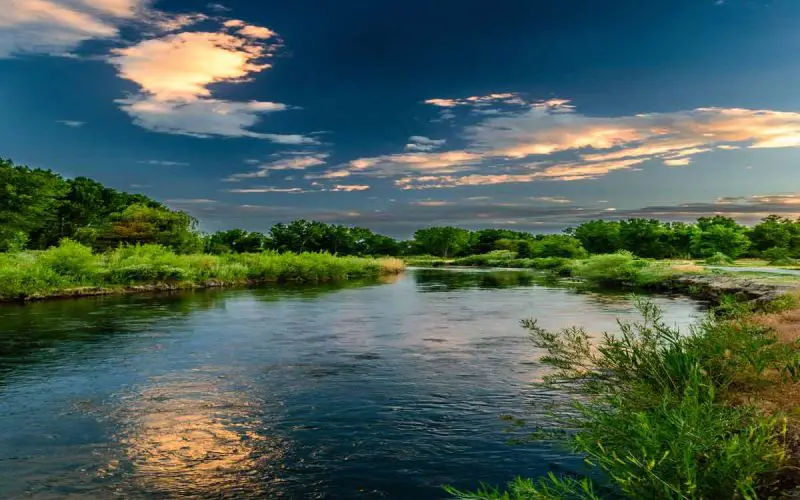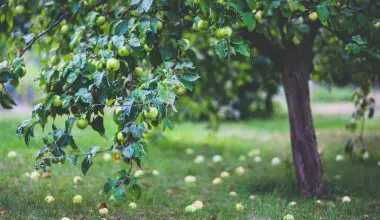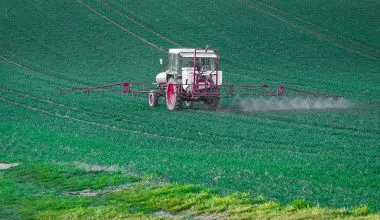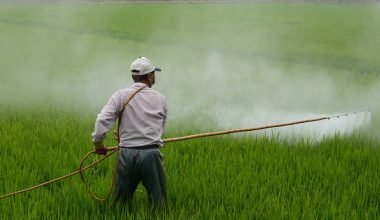Table of Contents Show
Table of Contents
- What are Riparian Zones?
- Characteristics of Riparian Zones
- What are Riparian Forest Buffers?
- How do buffer zones work? Functions and Values of Riparian areas
- Benefits of Riparian Buffer Zones
- Designing a buffer zone
- Species Selection
- Effectiveness of Riparian Buffer Zones
- Long term Sustainability of Riparian Buffer Zones
- Threats to riparian Zones
- Efforts to Conserve Riparian Buffers
What are Riparian Zones?
The plains and areas surrounding a river, or any water body for that matter, are called Riparian zones.
Not only do riparian zones include floodplains, but also the riparian buffers bordering the flood plains. Riparian zones offer recreational benefits to streams, many environmental benefits, groundwater, and downstream land areas.
Ground water is mostly found at shallower depths in Riparian Zones. You see, if you’d have to dig 10 meters to find water on lands nearby, you’ll find it at 1m in the riparian zone.
Riparian zones are clearly visible by a green belt hugging the river with suitable plants that are modified to depend on the shallow water table.
A mat of decay material over the soil is created because of the extra moisture in riparian zones and related wet lands, along with large amounts of vegetation. It is mostly wet because the water table is at the surface or close to it. The moisture is conserved because of this organic rich layer.
The surface water is protected in many ways due to the vegetation and sponge like quality of the soil in wetlands, flood plains, and riparian zones.
Characteristics of Riparian Zones
Riparian zones are noticeably different from the surrounding areas because of unusual soil and vegetation characteristics that are strongly affected by the existence of water.
Vegetation
The type of vegetation that grows in riparian zones is different from surrounding agricultural land’s vegetation because of high availability of water in riparian zones from the river.
The area of vegetation in riparian zones is known as riparian buffers. We’ll be discussing riparian buffers ahead. [Skip to Section]
Soil
Soil in natural riparian areas contains stratified deposits of different textures. Those soil textures are because of random flooding or fluctuating water tables that might reach the surface. Soil wetness depends on water levels of the river.
Sometimes the soil may even get waterlogged due to high levels of water or flooding.
Water
Riparian areas are directly linked to water from a water source or water body. They are found along the natural water course. It’s only understandable that riparian zones have high levels of water since they form borders of rivers and lakes.
What are Riparian Forest Buffers?
A riparian buffer, also known as a stream buffer, is an area that is vegetated near a stream. It is usually forested and helps to provide shade and protection to the stream from the impact of adjacent land use (agricultural or industrial).
It is vital to help increase water quality in associated streams, lakes, and rivers. This is beneficial for marine life and environment. It is reported that decline of many aquatic ecosystems is mainly due to agriculture and associated activities.
Read more: Harmful chemicals used in Agriculture and Cultural Eutrophication.
These stream buffers are a common conservation practice aimed at increasing water quality and reducing pollution.
How do buffer zones work? Functions and Values of Riparian areas
Riparian areas functions are different due to their variation across the country. Although there may be some differences between riparian areas, the ecology of these areas is the same. This is because all of them possess similar characteristics like nutrient cycling, water cycling, hydrologic function, energy flow, and plant and animal population.
Thus, the riparian areas possess different unique functions in relation to nearby agricultural landscapes.
Some of the functions that are found in riparian areas include the following:
Base flow
Alluvial soil, that is a sedimentary material deposited by flowing water, is deep and stores large amounts of water and runoff of rainfall.
Infiltration of upland runoff helps to maintain the alluvial aquifers in the western United States.
The base flow is further maintained by riparian vegetation that shades the water, helping to slow down evaporation and keep it cooler.
Nutrient cycling
Upon exposure of nutrients into a riparian area, the mechanisms working in these riparian areas tend to change them. Some nutrients like phosphorus, nitrogen, calcium, potassium, and magnesium are taken up by the shallow-rooted riparian vegetation. The riparian vegetation takes up the dissolve nutrients in the ground water and those that tend to leach out in the soil.
Hydrology
Water flow affects the development of the soil and growth of vegetation. The benefit of riparian areas is that the low landscape areas they occupy are generally nearer to the surface and available for plants.
The fine textured flood plains are able to hold large amounts of water. These conditions promote a much more productive and diversified plant ecosystem within the riparian areas.
Water quality
Sediments and nutrients are intercepted by the riparian areas due to the spreading of floodwater and water velocities becoming reduced. This makes it much less likely for sediment and nutrient rich organic materials to reenter the stream.
Aquatic life
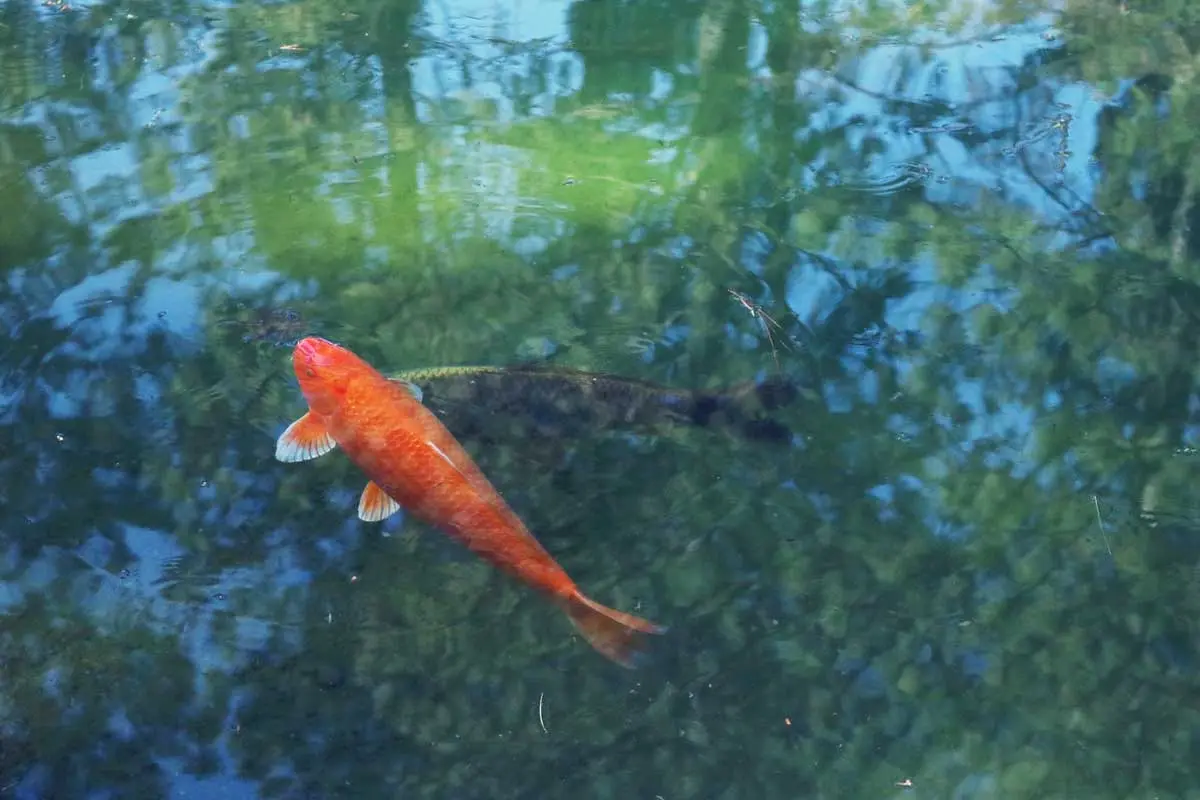
Herbaceous, woody, and rooting vegetation helps to shape up the aquatic landscape and stabilize stream banks, retarding erosions, and, in areas, helps to develop overhanging banks that serve as habitation for fish breeding.
Entrapment of sediments before it reaches the stream helps to maintain a much cleaner or more sediment-free steam bottom where aquatic organisms reside. These organisms are prey for various birds and fishes.
Downstream flooding
Riparian area vegetation is a key factor for reduction in downstream flooding. Once floodwater flows through a vegetated area, the plants resist flow and absorb energy. This makes time available for water and nutrients to infiltrate into the soil and be stored for plants.
Transfer of energy
The unique feature of riparian area derives from the fact that litter produced in the riparian ecosystem is transported and made available to in-stream animal communities as well as for those downstream from the source of organic matter production. Riparian organic matter has the potential ability to support diverse food webs within both aquatic and terrestrial ecosystems.
Terrestrial life
Riparian ecosystems are said to be extremely productive and possess habitat values for wildlife. This can be demonstrated visibly in western United States, where riparian areas comprise of less than 1% of the total land area at some time of the year but supports much of the terrestrial wildlife. Riparian ecosystems provide avenues for migration and dispersal routes between wildlife habitats.
Benefits of Riparian Buffer Zones
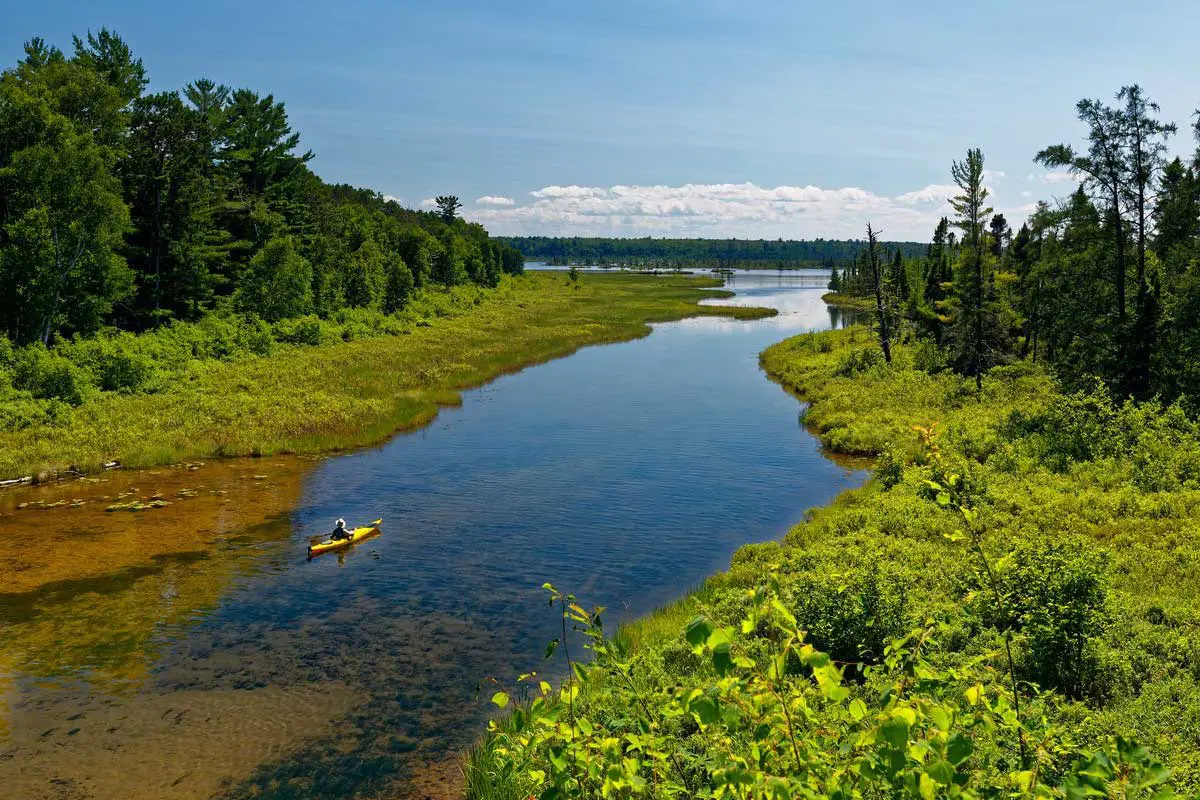
Riparian buffers intercept nutrients, sediment, and pesticides, and other materials in surface water runoff. They also minimize nutrient pollutants in shallow sub-surface water flow.
They help to provide a habitat for many species, primarily ones fleeing from pesticide-laden agricultural areas. They can also limit soil erosion by stabilizing the stream bank.
Water Quality
Riparian buffers actually counteract eutrophication in downstream lakes and ponds. Eutrophication can be detrimental to aquatic habitats because of the large number of fish kills that occur due to loss of dissolved oxygen.
Stream buffers keep various toxic chemicals, like pesticides, that may be harmful to aquatic organisms out of the water.
The riparian forest buffers also help to stabilize the riverbank that surrounds the water body. This is important as soil erosion is another major problem in agriculture. Sometimes, these riverbanks can be lost if there’s no protection!
Erosion can lead to siltation and sedimentation of downstream lakes, reservoirs, and ponds. The process of siltation can significantly reduce marine life in dams and reservoirs.
Flood Protection
Riparian zones greatly aid in flood protection. Zone 3 (as we’ll talk ahead) is mostly responsible for flood protection. Native grasses in zone 3 slow down floodwater velocities on the river banks.
Think of them like the first barrier to breaking the energy of strongly flowing water. These grasses absorb the energy from flowing water.
Provide Habitats
Riparian buffers are said to provide homes for a large number of diverse organisms. This is especially true for those animals that have lost habitats due to agricultural land being put out of production.
The habitat also doubles as a corridor for species that have seen their habitat become fragmented by land use.
Increased Biodiversity
Planting buffer strips is actually a great method to improve biodiversity on farms.
Addition of new vegetation to land near a water source can essentially increase biodiversity. You can allow species to establish a new home once again after they had been displaced due unsustainable use of land.
Re-establishment of the number of native species and general biodiversity is then increased.
Economically beneficial
Stream buffers help to increase the valuation of the land and increases production of alternative crops.
Hazelnut and Black Walnut are some of the vegetation that can be profitably harvested and be incorporated into the riparian buffer.
Leasing fees for hunting can also be increased as the larger habitat means that this land will be able to seek after many hunting purposes. However, you should read up on the negative effects of poaching wildlife!
Other Benefits of Riparian Areas
Riparian area is a highly beneficial ecological landscape that provides so many benefits. They help in controlling non-point source pollution, hold and use nutrients and reduce sediments.
These areas are a sight to behold, catering various recreation and scenic values.
However, it must be noted that these areas are small and fragile. This means that if tourism is to be conducted in this landscape, it must be done sustainably.
The region is a source of food, water, and cover for a vast majority of animals and as well as providing migration routes and stopping pit stops for a variety of wildlife. Grasses and trees help to stabilize steam banks and help to reduce floodwater velocity, this results in reduced downstream flood peaks.
The alluvial aquifers maintain the base flow in most of the rivers in humid areas due to high water tables. In drier climates, water from the streams can help bring up the water table that is deep beneath the land.
Designing a buffer zone
The riparian buffer can be divided into three different zones, with each zone having its specific purpose of filtering water runoff and interacting with adjacent agriculture and aquatic systems.
Zone 1
This zone provides shade to the water source and acts to stabilize the bank by preventing soil erosion.
This zone should be consistent with large native tree species that aim to grow faster and can quickly act to perform these functions.
Zone 1 is the smallest of these three zones. It also absorbs the fewest contaminants as most of them are eliminated by Zone 2 and 3. The Streambed Zone (river bed) is also closely linked to Zone 1 because the water seeps beneath the stream banks and makes its way below zone 1.
Zone 2
This zone is made of native shrubs, aiming to provide habitat for wildlife including the nesting areas for a majority of bird species. This zone also acts to slow absorb contaminants that Zone 3 had inadvertently missed out on. This zone is said to be an important transition between forest and grassland.
Zone 3
Zone 3 is said to be the first line of defense against the contaminants. It consists of native grasses and allows water to run off slowly and absorb contaminants before they reach other zones behind.
Here’s an example of a natural buffer zone on the river bank. https://www.pexels.com/photo/body-of-water-and-green-field-under-blue-sky-photo-1179225/
Species Selection
Different species grow on different zones due to varying soil conditions. Some examples of plant species grown on riparian buffer zones are as follows.
Zone 1:
- Bur Oak
- Hackberry
- Northern Red Oak
- Cottonwood
- Siberian Elm
Zone 2:
- Silver buffaloberry
- Black cherry
- Chokecherry
- Amur maple
- American plum
- Sandcherry
- Manchurian apricot
- Elderberry
Zone 3:
- Western wheatgrass
- Sand Bluestem
- Sand Lovegrass
- Switchgrass
- Little Bluestem
- Indiangrass
- Green Needlegrass
- Prairie Cordgrass
Effectiveness of Riparian Buffer Zones
There is much scrutiny concerning how effective riparian buffers may be, leading to widespread monitoring and testing of these areas.
University of Georgia conducted a longitudinal study that showed that these buffers removed 60% nitrogen runoff and 65% phosphorus from the fertilizer application.
However, another study in 2017 showed that there is no efficiency for reducing AMPA and glyphosate to leach into the stream.
Further research needs to be done to make a better judgment regarding the effectiveness of riparian buffers.
Long term Sustainability of Riparian Buffer Zones
Little maintenance is required once a riparian buffer has been installed.
The grasses and trees regenerate naturally once they acquire maturity and help the riparian become a much effective buffer. Its sustainability is very attractive to landowners since they have to do minimal maintenance and still reap the benefits.
The riparian forest buffer can become the most effective way to increase and protect the aquatic biodiversity, water quality, as well as manage water resources in a developing country.
Threats to riparian Zones
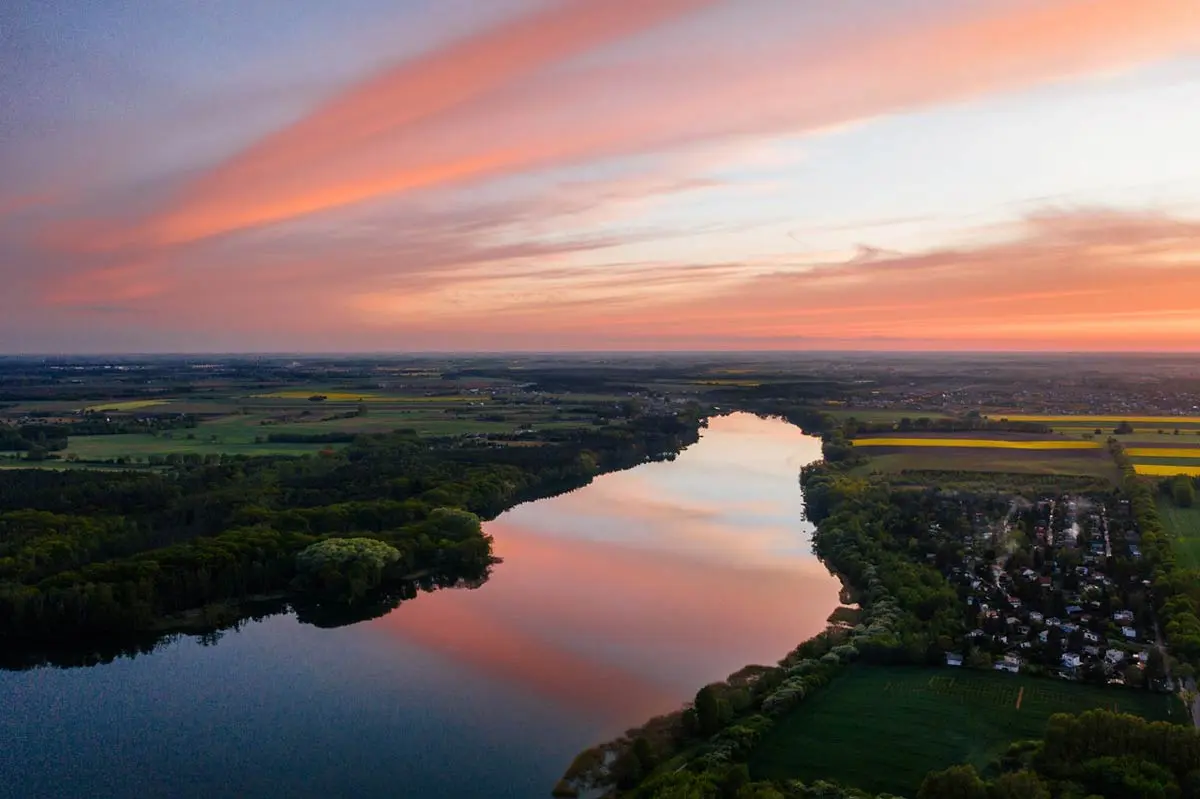
Flooding in the riparian areas leads to erosion and deposition. Flooding is very devastating to riparian areas. However, riparian areas usually recover from the impact of seasonal flooding.
Human intervention may have a long term adverse effect on the area. The construction of dams, levees, and the channeling of the streams are some of the most impactful things that humans may do to these areas.
This is because these constructions tend to alter the movement and storage capacity of water that is crucial for riparian areas. Water being withdrawn from the stream is also responsible for reducing the base flows, depriving riparian areas of the moisture.
Recreational development can destroy the natural biodiversity of plants and structure, causing soil erosion and compaction and disturbs wildlife.
The most common disturbance to riparian area involves the clearance of vegetation (or deforestation) and subsequent conversion of the area to other uses such as cropland and urban land. Continuous deforestation can actually devoid the area of vegetation.
Overgrazing by livestock in the area for longer period may reduce the vegetation and trample stream banks.
Exotic plants often take advantage of the conditions provide by the riparian zones and invade these areas. These plants then dominate native plants, leading to an overall reduction in the vegetation of the land making it an unfavorable area to support native wildlife.
Watershed persistence is necessary in riparian area. The hydrology of the watershed is said to be the most important relationship concerning the riparian area.
In general, the type and amount of vegetative ground cover, the area of the watershed, and the slope of the terrain are in direct relation to the percentage of water that will enter the drainage system as surface flow or percolation of water.
Riparian plant composition, structure of habitat, and productivity are determined by the time, duration, and the extent of the flooding.
Land use, paved-over areas, or the removal of vegetation causes water to flow very quickly through the riparian zone. The moisture of the soil and its productivity is significantly reduced. This may lead to prolonged periods of low flow or even no-flow and an increased duration and frequency of floods which will ultimately decline the productivity.
Efforts to Conserve Riparian Buffers
The Conservation Reserve Program (CRP), an assistance program to the farmers in the United States helps to provide incentives to landowners who favor riparian buffer restoration.
This is to encourage them to install riparian buffers around water systems that have a high chance of non-point water pollution and have high chances of soil erosion.
The Nebraska systems of Riparian Buffer Payments offer payments to cover the cost of setup, annual rents, and sign-up bonus. These incentives are necessary as they offer compensation to those who are carrying out agriculture, for economic losses for using the land for riparian buffers.
If this land becomes highly erodible and has no capital gain, it can be useful to take advantage of these CRP programs economically.
